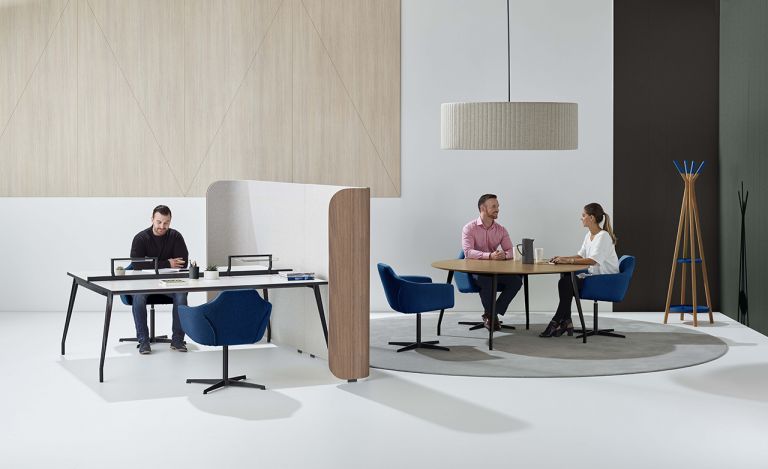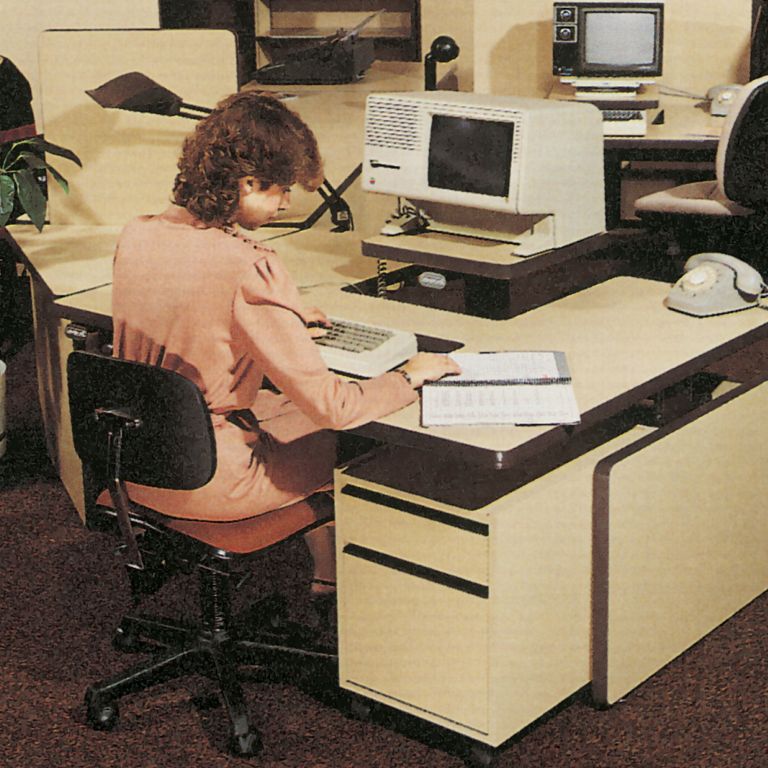There are some moments of disruption so profound, society cannot simply pick up the same tools and go back to how it was before.
Along with isolations and social distancing came time for many to reflect on what makes life and work meaningful and rewarding. Digital and virtual replaced paperwork and meeting rooms and presenteeism was replaced by the recognition productivity is possible anywhere.
For many employees, working from home brought new balance and valued flexibility, while for managers and CEOs new perspectives have arisen on the costs and benefits of their commercial real estate tenancies.
What was once a disruption is now becoming an opportunity for new, nimble, adaptable approaches to the workplace. A workplace in which wellbeing has been elevated from a premium extra to a foundation stone for building a culture that collaborates, connects its people and facilitates the serendipity of chance encounters with ideas and conversations.
For designers, the opportunity is to draw creative inspiration from the facets of humanity that emerged from adversity. With the power to connect, engage, celebrate and improvise, and making material palettes and spatial decisions that amplify positive possibilities while enhancing wellbeing and protecting occupant health.
“You’re changing behaviour. That’s really what workplace design is about.” - Primo Orpilla, Studio O +A
Shall we ever return en masse to the office?
The Reserve Bank of Australia surveyed a number of Australian companies in August 2021, and found the majority are adopting hybrid working as a permanent model, and that a quarter of those firms expect to reduce their commercial office space by 25% as a result of this.
Other firms are looking to change how they occupy space. In the US, some firms are changing the workplace model from large, central CBD premises to a smaller CBD office and smaller decentralised offices closer to where staff live – the hub and spokes model.
“Demand for office space has declined and is expected to remain lower than it would have been in the absence of the pandemic, although this may be partially offset by increased social distancing requirements and a desire by firms to accommodate larger collaborative work spaces.” – Reserve Bank of Australia, August 2021
The experience of space
WSP in its analysis of the future workplace suggests the office is becoming an anchor point, rather than the sole site where tasks are achieved. Businesses in the knowledge economy will still need people to collaborate, engage face-to-face and benefit from the “serendipity” effect of chance encounters and casual conversations in the workplace, but as flexible working becomes universal, the collective workplace will need to become more attractive and engaging to encourage workers to spend part of their week there.
This highlights the importance of the experience of space, not only its dimensions, but also the quality of lighting, furnishings, acoustics, views and air quality.
The perception of connection and belonging is also important. Humans are believed to have a threshold – Dunbar’s Number - in terms of how many close relationships they can effectively maintain. Large, impersonal spaces can as a result encourage people to retreat from each other, rather than engage with those around them.
Home, hotelising and hot desking
Whether space is scaled down in size or decentralised to multiple, smaller tenancies, flexibility, amenity and sociability are regarded as crucial. The KPMG Future of Work research identified some major trends including flexibility becoming key in commercial workspaces, data and technology being provided as core services and physical offices evolving into collaboration hubs.
Before the pandemic, workplace design for premium spaces had already emphasised the importance of spatial planning and fitout designs that encourage staff to shift location and setting depending on the task or personal preference. Instead of rows of individual cubicles or a warren of private offices, open plan with zones for specific activities became the trend.
However, open-plan does not work for everyone. Nor is it necessarily ideal in a scenario where the workforce may scale up or down on any given day.
The new emerging style is focused on the experience of the person. It combines elements of the comforts and security of home with adaptable spaces that suit multiple work types. Workplace design experts are calling the “hotelising” of the workplace. Not only does the fitout and design reflect the comforts and aesthetic of a hotel, instead of the free-for-all approach to workspace associated with hot-desking, staff who work in the office for part of their week can book a workstation, desk or meeting room.
Virtual space meets tangible place
Agile organisational innovations are supported by an enhanced digital domain that equips the workplace with smart elements including apps that enable personal interaction with the space, such as making room bookings, personal locker security and accessing concierge services. This smart navigation of the working day is another element that had been emerging as a future-forward workplace feature before COVID and has now become fundamentally part of everyday life.
We have become familiar with using apps to check into the supermarket, to verify our vaccination status and to order food deliveries, for example. It is not a mental shift of any magnitude to use apps to navigate and operate elements of our workplace – though it does represent a culture shift for many workplaces.
From a management perspective, the smart workplace platforms can also enable insight into when spaces are being used, and how often. This creates the possibility of fine-tuning the location of activity-based hubs and associated furnishings and informs a more refined and evidence-based approach to spatial planning.
This suggests too that fixed partitioning, fixed workstations and conventional office fixtures will need to be superseded by mobile, flexible and adaptable furnishings. This will allow spaces to change in response to how they are being used, enhancing the ability of the workplace to fit the workers and their activities.
From a safety perspective, the app-enabled approaches can also ensure there is situational awareness of who is working where in the office, which is an essential part of the ongoing outbreak management scenario. In addition, to reduce the risk of contagion spreading between colleagues, having the ability to manipulate spaces and furnishings to support appropriate distancing is also important.
Function meets form
Research by McKinsey into the future workplace has identified that while around one quarter of those employed in advanced economies can work from home for most of the week, there are some specific activities best suited to a workplace. These include interactions involving a high degree of sensitivity or interpersonal engagement such as negotiations, onboarding new employees, collective decision-making on critical matters and brainstorming.
The emphasis is on creating a workplace that functions as a “culture space”, according to Anne-Laure Fayard, John Weeks, and Mahwesh Khan. In a recent article in the Harvard Business Review they highlighted findings from psychology and neuroscience that show human cognition is affected by the environment in which information is being received. In other words, the quality of a workplace has a direct impact on how well people think, how they process information and how they perform in their roles. Working from home may have been isolated, but many workers found they performed better and benefited from improved concentration and reduced stress because their home was a more comfortable and pleasant environment than the office.
The priority for the future workplace, the authors suggest, is to provide the “human moments” that engage staff and make the workplace fulfilling. Through technology and applied ergonomics, including acoustic strategies to support specific activities, the office becomes a “culture space”.
Related articles

Exploring Malleability as a Catalyst for Change

Innovating in the workplace yesterday, today and tomorrow








